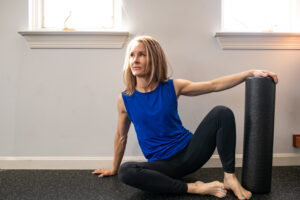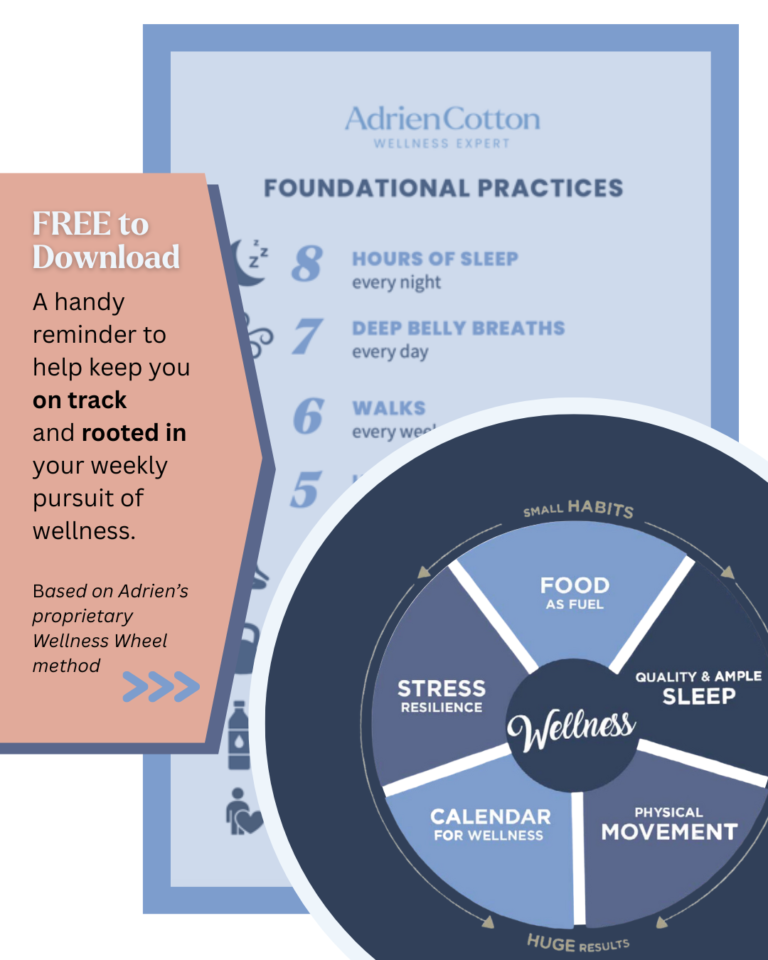Cardio is a great form of exercise and has amazing benefits for heart health and blood pressure, helps regulate blood sugar, and builds endurance. Cardiovascular exercise can also improve sleep, which is super important in my book! Keeping a cardio routine—like walking, swimming, or cycling—as part of our fitness regime is excellent for our overall health.

However, particularly in midlife – post 40 – strength training is equally, if not more, important. At 30, we start to lose muscle mass and will continue to lose 3% to 5% of our muscle mass each subsequent decade. After age 50, muscle mass loss increases, which is why strength training is essential.
For perimenopausal and menopausal women, our fluctuating hormones create even more imbalance with our bodies resulting in holding onto fat and changing up our body composition—like that belly. As we experience lower levels of estrogen, we also experience the increased risk of bone loss.
It can feel like we’re stuck in a body we don’t recognize and, truth be told, don’t love.
It’s time to reframe exercise. Gone are the days when we worked toward our “sweat equity” through high-intensity training sessions as our go-to plan for taming that tummy and dropping those pounds.
In my recent webinar, I shared a stark difference between the approach to exercise and diet in our 20s and 30s approach and now. In our 20s and 30s, the purpose of exercise was possibly all about weight loss or maintenance. Now, at 40 plus, the purpose of exercise is strength, longevity, health, balance, and confidence.
Our 20-something bodies were operationally different. We didn’t have constantly changing hormones, muscle loss, and an increase in cortisol from living the busiest and most stressful time in our lives. We also didn’t have nearly the fatigue we often experience during perimenopause, making it difficult for us to find the motivation to head to the gym.
Simply put, what worked for us then won’t work for us now.
Studies have shown that strength training can help mitigate many of the issues we experience during perimenopause and menopause. The most prominent benefits include:
- Reducing muscle loss. Weight training can help slow muscle mass loss while increasing our agility and energy. And the stronger our muscles are, the more they pull on our bones. That pulling creates tension that encourages our bones to build more bone—exactly what we want to stave off osteoporosis! The stronger our bones, the less chance of bone fractures.
- Boosting our metabolism. More lean muscle mass means a higher resting metabolic rate. Our bodies use more calories to maintain muscle than fat. One pound of muscle can burn three times more calories than a pound of fat. So even at rest, our muscles are working to burn calories.
- Supporting our brain health. Recent studies show that resistance training can create new neural pathways and help reduce our risk of cognitive decline as we age and prevent diseases such as Alzheimer’s and dementia.
- Preventing age-related neurodegeneration. Another study published in the journal GeroScience noted that resistance training may help prevent age-related neurodegeneration and support the “preservation of brain health.”
So, what should strength training look like for you?

It depends. It can be as simple as adding some free weight repetitions to your exercise routine or trying that resistance training class you’ve been eyeing at the gym. Equipment like resistance bands and TRX suspension systems can easily be used at home if the gym vibe isn’t your thing.
However you choose, I encourage you to incorporate strength training into your life to enjoy its many benefits. And if you are wondering how to start a strength training routine, consider my Concierge Small Group Wellness program, where I help women take control of their health and wellness by building lasting habits one small change at a time.



